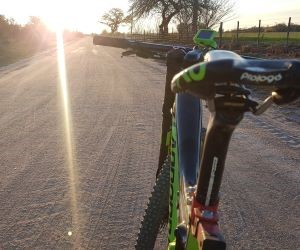Learn how to choose gravel bike geometry by comparing stability, comfort, and performance factors that match your riding style and terrain needs.
HOW DO I CHOOSE THE RIGHT GEAR RATIO FOR SPEED?
Selecting the right gear ratio for speed is one of the most overlooked yet critical elements of cycling performance. Whether you’re sprinting on flat roads, descending at high velocity, or optimizing for time trials, the relationship between cadence, chainring size, and cog selection determines how efficiently you transfer power into motion. This guide explores the science of gear ratios, practical selection strategies, and real-world applications to help cyclists—from enthusiasts to competitive racers—find the sweet spot between raw speed and sustainable output.

Understanding gear ratios
A gear ratio in cycling is defined by the relationship between the chainring (front gear) and the cog (rear gear). The ratio dictates how many wheel revolutions result from each pedal stroke. Higher ratios produce greater speed potential but require more force, while lower ratios make pedaling easier but cap maximum speed. Understanding this balance is the foundation of selecting the right setup.
The mechanics of speed and cadence
Cyclists generate speed by combining cadence (pedal revolutions per minute) with the gear ratio. A larger chainring paired with a smaller cog yields a higher ratio, meaning more distance per pedal stroke. However, if the ratio is too high, riders risk grinding inefficiently at low cadence, which increases fatigue and reduces long-term performance.
High gear ratios: maximize speed but demand strength
Low gear ratios: easier pedaling but limited speed
Optimal cadence: generally between 85–100 RPM for efficiency
Wheel size: affects the effective rollout of each gear ratio
Recognizing how gear ratios interact with cadence allows riders to avoid extremes. The goal is to stay within a sustainable cadence zone while exploiting ratios that match terrain and speed demands. This approach transforms raw power into consistent velocity without premature burnout.
Gear selection strategies for speed
Once the fundamentals are clear, the next step is applying them strategically. Different disciplines, terrains, and goals demand distinct gear setups. Track sprinters, time trialists, and criterium racers all approach gear ratios differently based on the type of effort required and the speed ranges expected.
Discipline-specific considerations
On flat roads, riders typically favor larger chainrings (e.g., 52 or 53 teeth) paired with smaller cogs (11–13 teeth) to sustain high speeds at efficient cadence. In contrast, time trialists often fine-tune gear ratios to balance aerodynamics with sustained power output, relying on precise data from power meters. Track cyclists push this concept further, using massive chainrings (up to 60 teeth) for explosive sprints, knowing races are short and cadence can remain high.
Road sprinters: large chainrings with 11–12T cogs
Time trialists: mid-to-large chainrings optimized for sustained cadence
Track cyclists: extremely high gear ratios for peak velocity
Gravel/All-road: moderate ratios balancing speed with adaptability
Beyond discipline, environmental factors matter. Tailwinds may allow for higher ratios, while headwinds or rolling terrain reward slightly lower setups. The cyclist’s physiology also plays a role: powerful riders with high torque can push bigger gears, while lighter riders may rely more on cadence efficiency. Customizing ratios to these variables makes the difference between fighting the bike and flowing with it.
Practical applications and testing
Theory is useful, but the real measure of the right gear ratio comes from on-road or track testing. Modern cycling technology—power meters, cadence sensors, and GPS units—allows riders to experiment with different setups and analyze performance in detail. Data-driven adjustments refine gear selection over time, ensuring ratios align with both speed goals and physical capabilities.
How to test and refine your ratios
Start by analyzing your average cadence and power output during key rides. If cadence drops significantly below 80 RPM at race pace, your gear ratio may be too high. Conversely, if cadence consistently exceeds 105 RPM without matching speed gains, the ratio may be too low. Adjust by changing chainring size or rear cog selection, then retest under similar conditions.
Record cadence and speed during sprint intervals
Evaluate time trial efforts at sustained power levels
Test gear ratios in real race conditions when possible
Review data with training software for trends
Cyclists should also consider incremental changes rather than radical shifts. A single-tooth change on the rear cog or a two-tooth adjustment on the chainring can significantly alter cadence and speed balance. Over time, these refinements create a personalized gear ratio setup tuned to your physiology, goals, and preferred terrain.
Ultimately, choosing the right gear ratio for speed is not about copying a pro’s setup but finding the balance that allows you to ride efficiently and confidently. Through structured testing, data analysis, and adaptation, cyclists can unlock speed gains without sacrificing endurance or control.
YOU MAY ALSO BE INTERESTED






